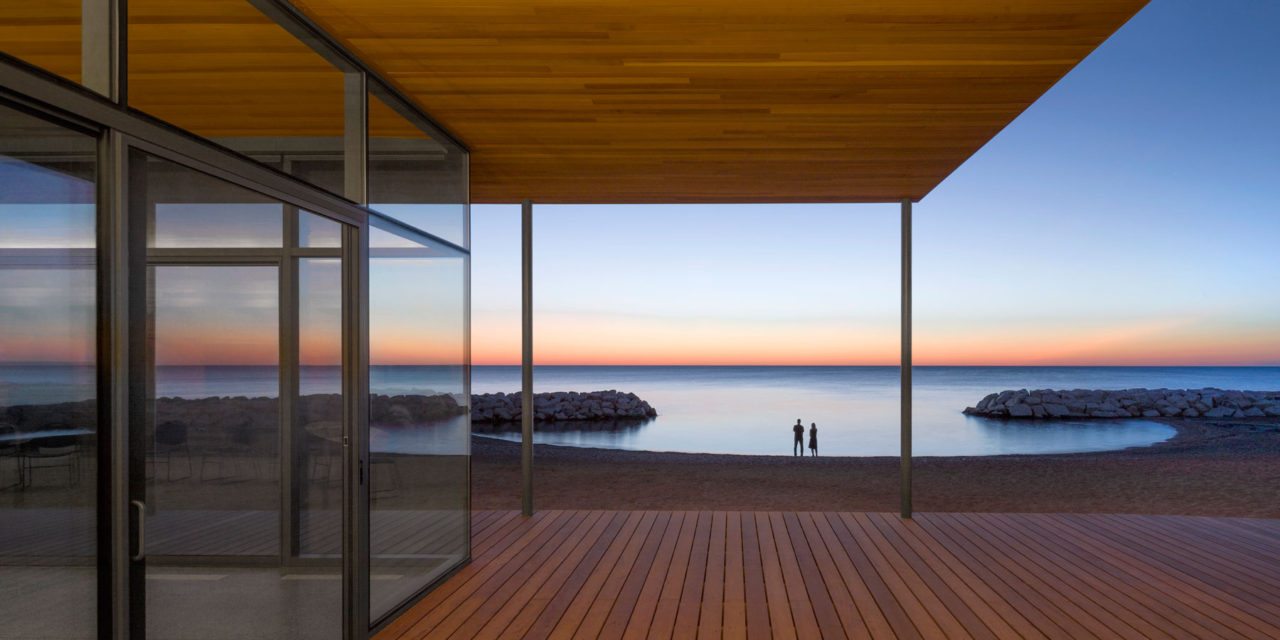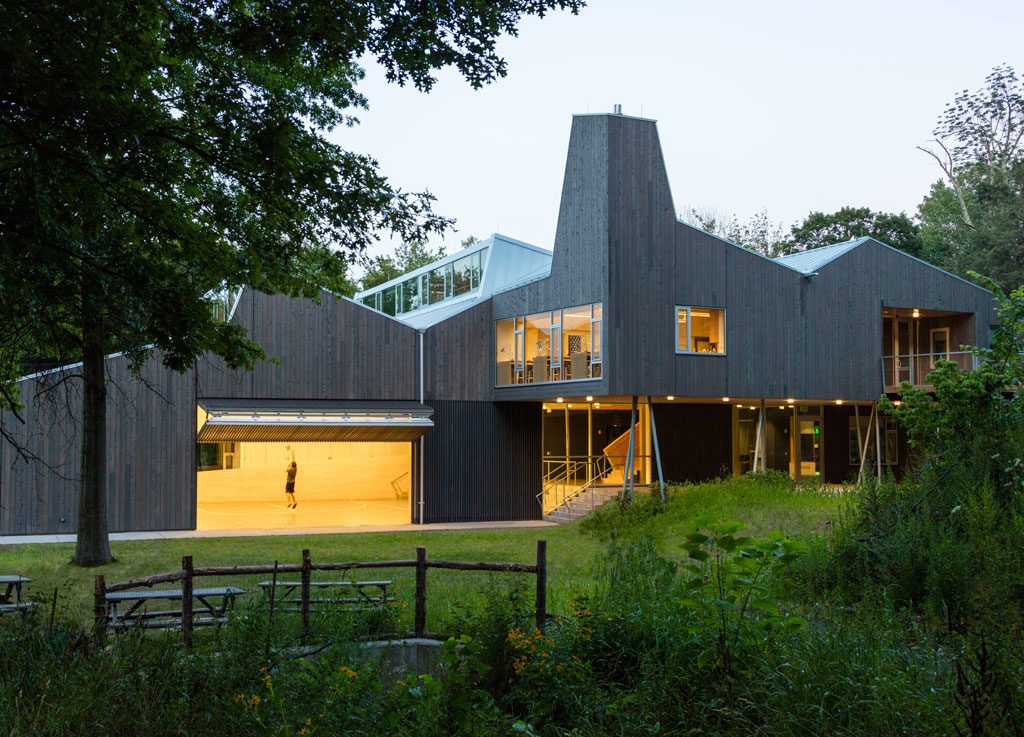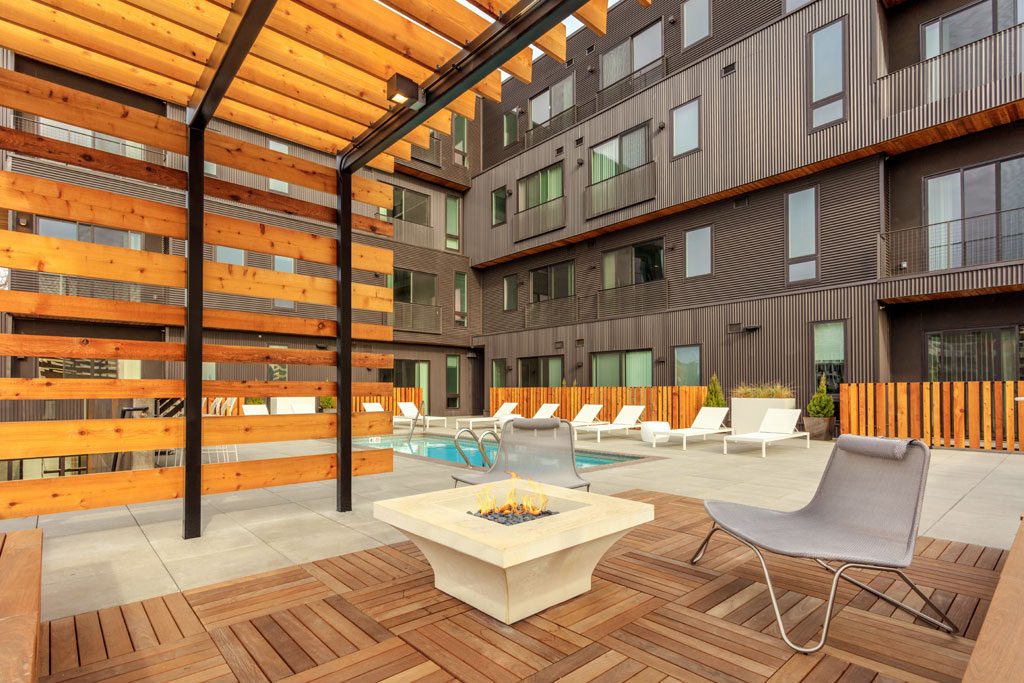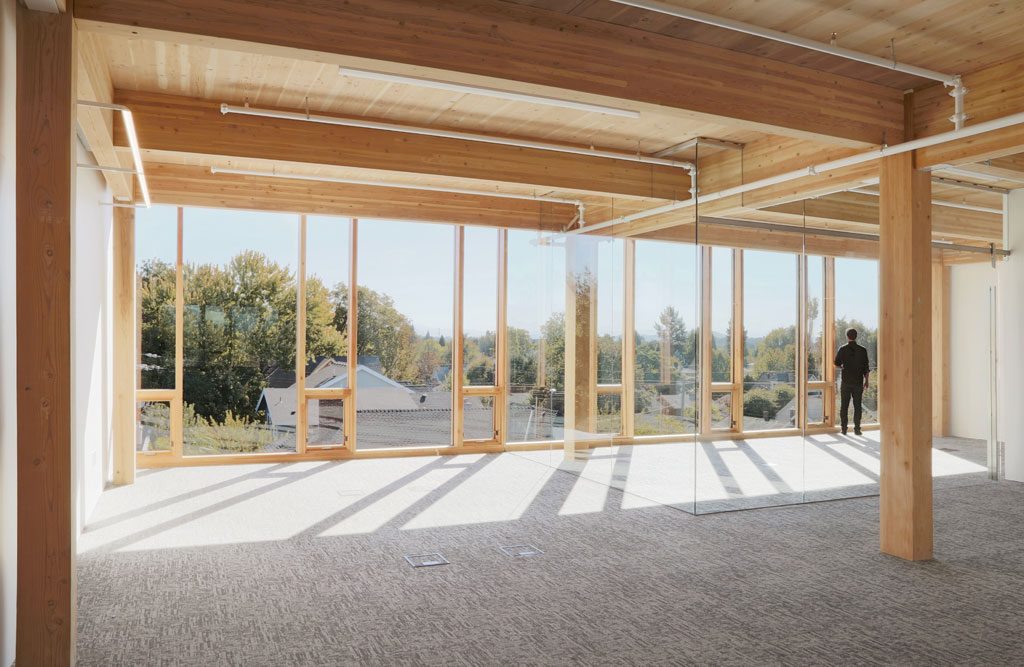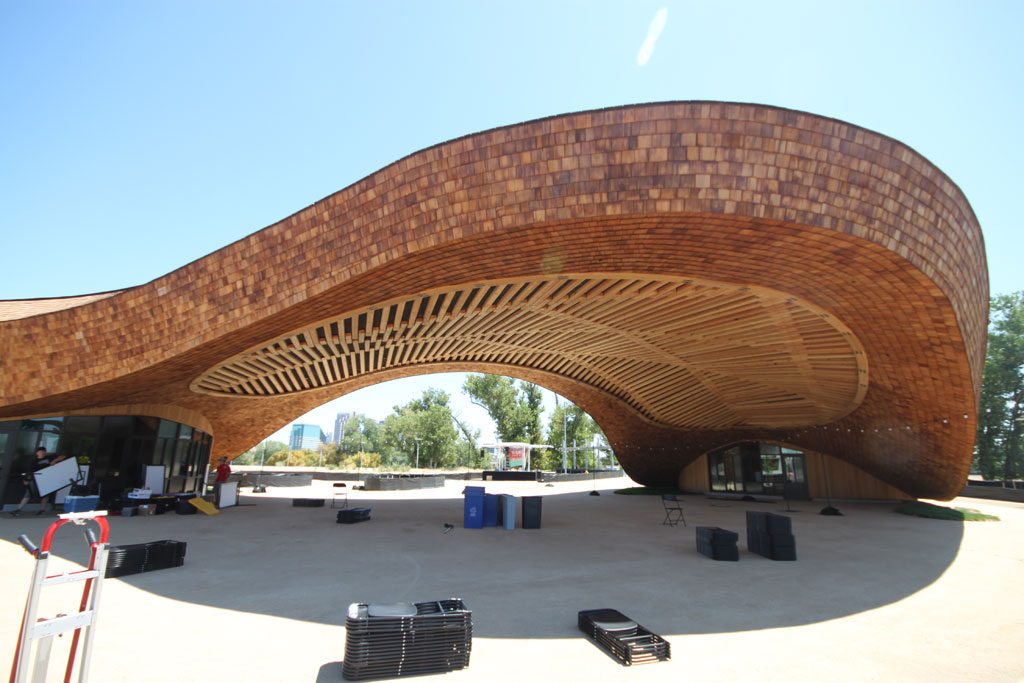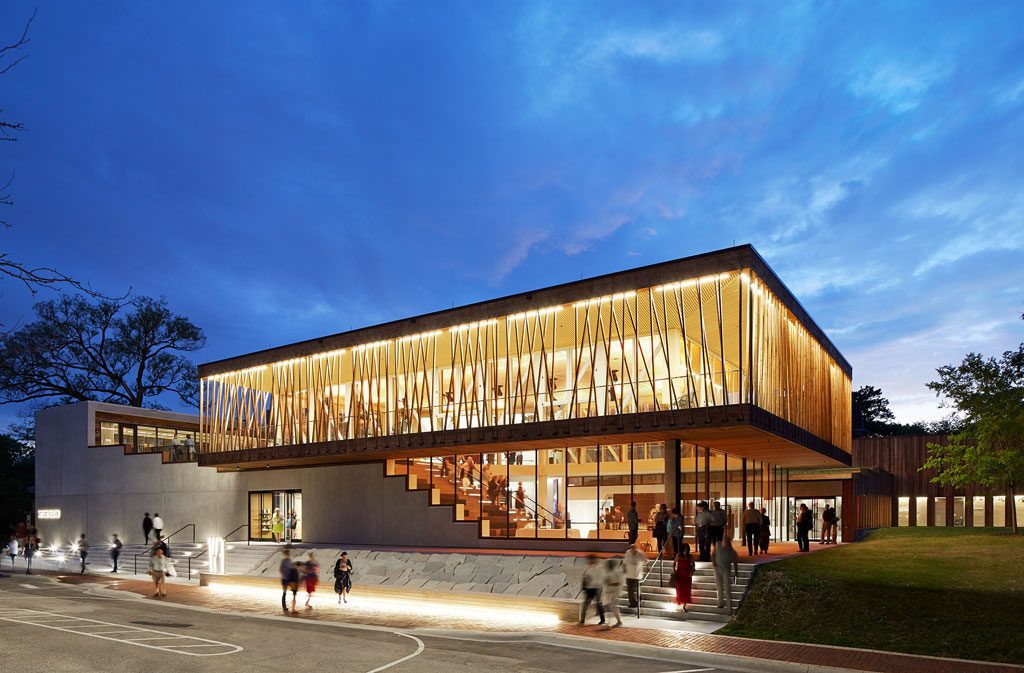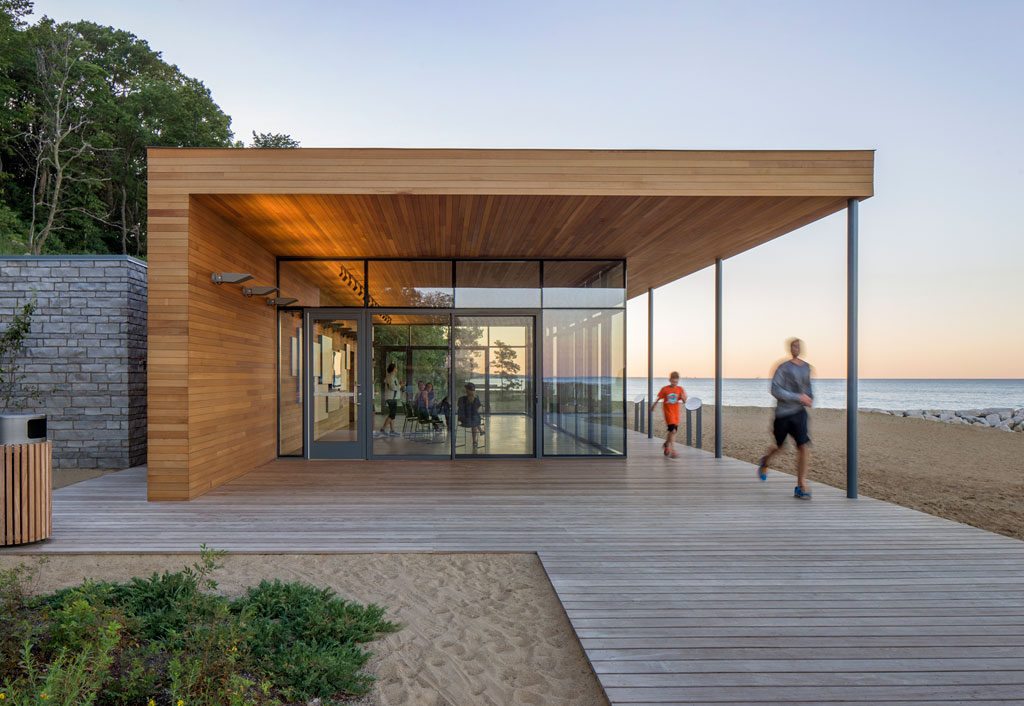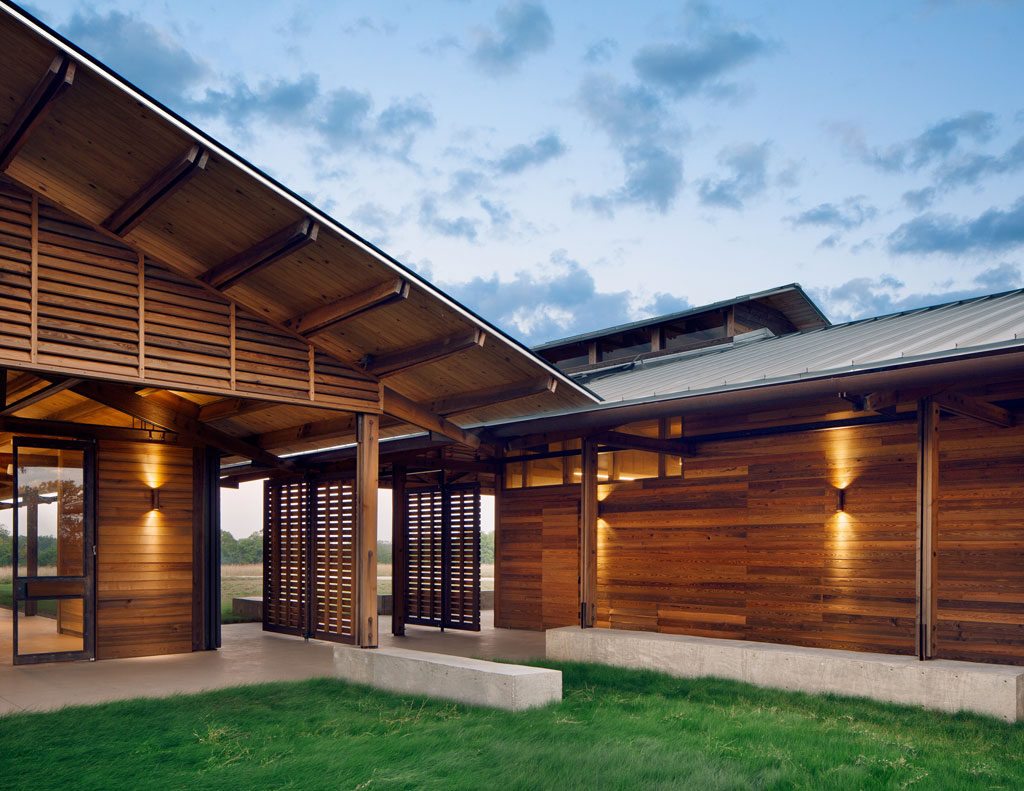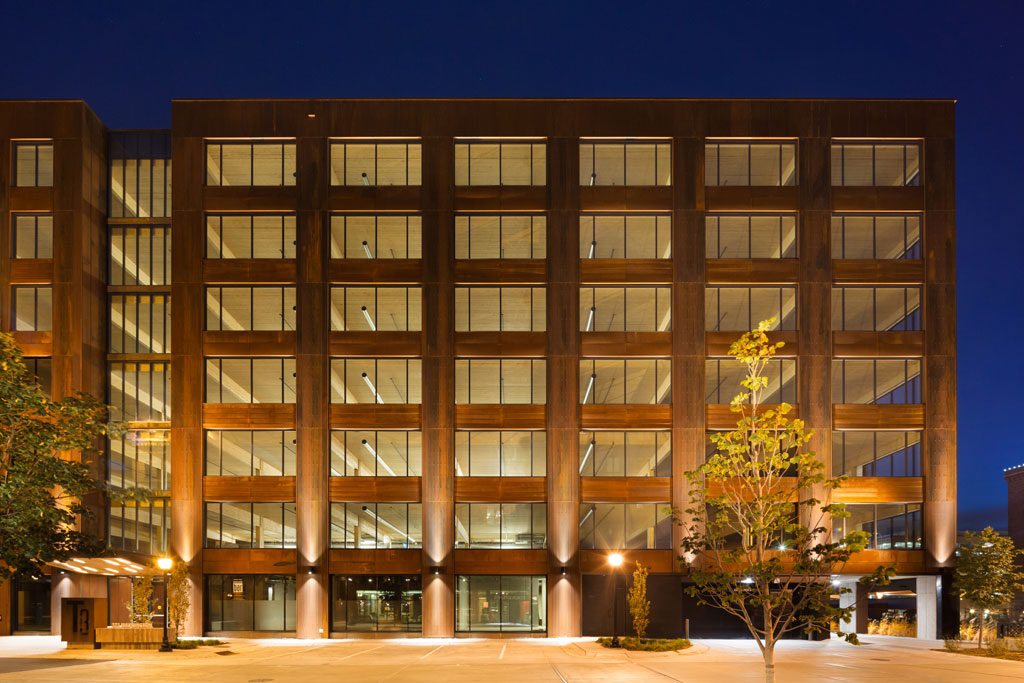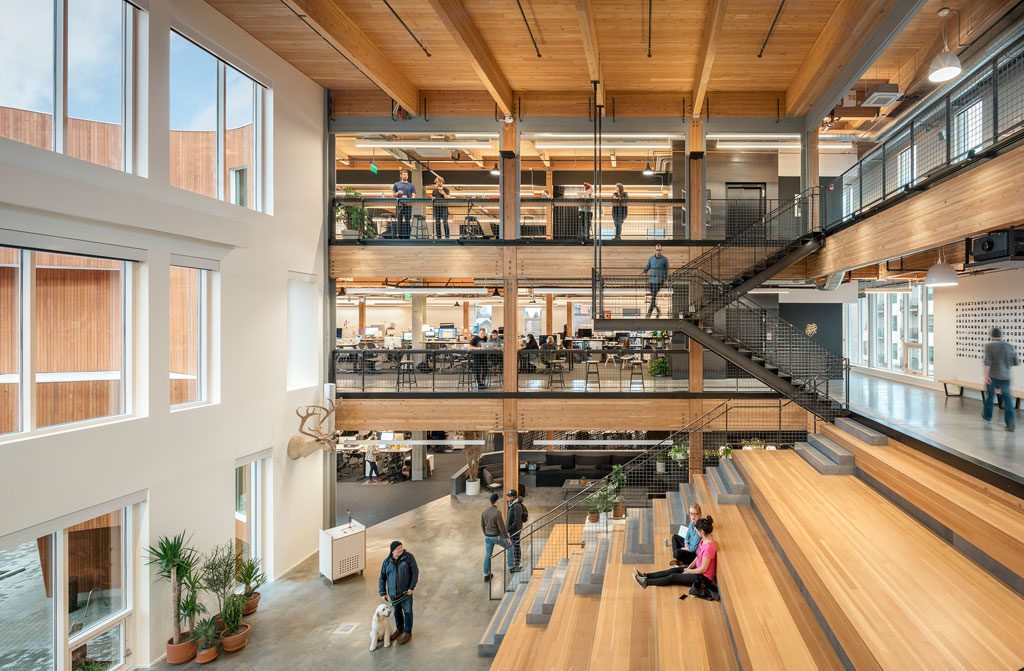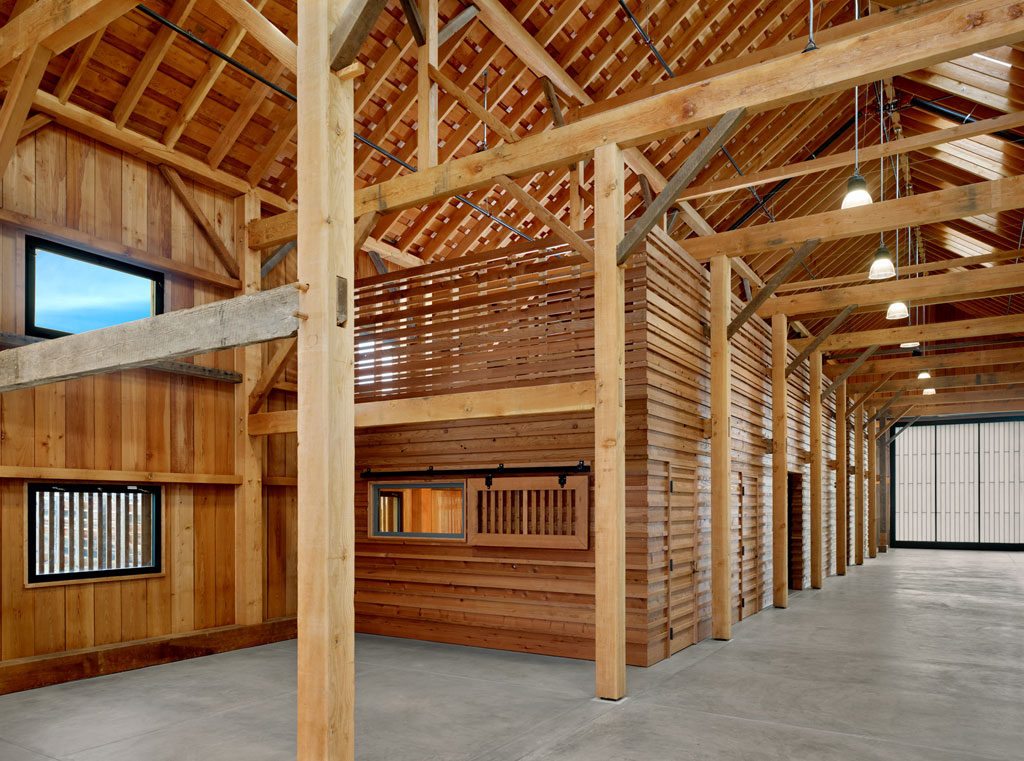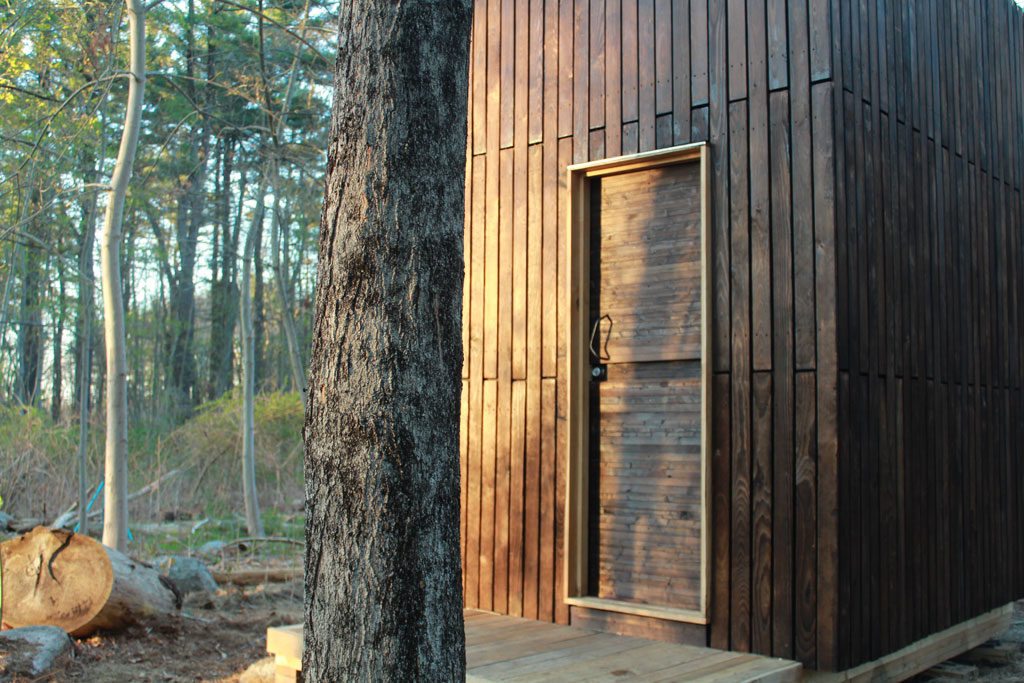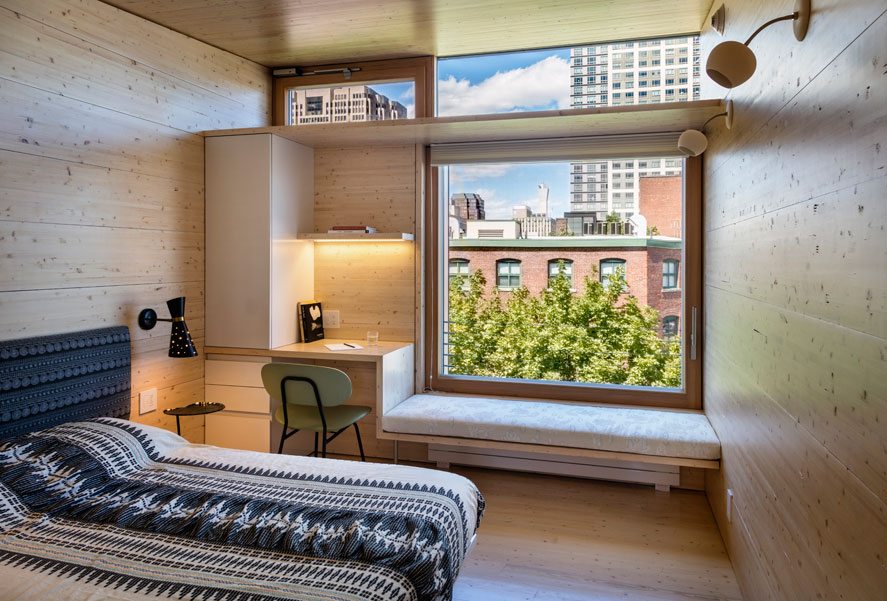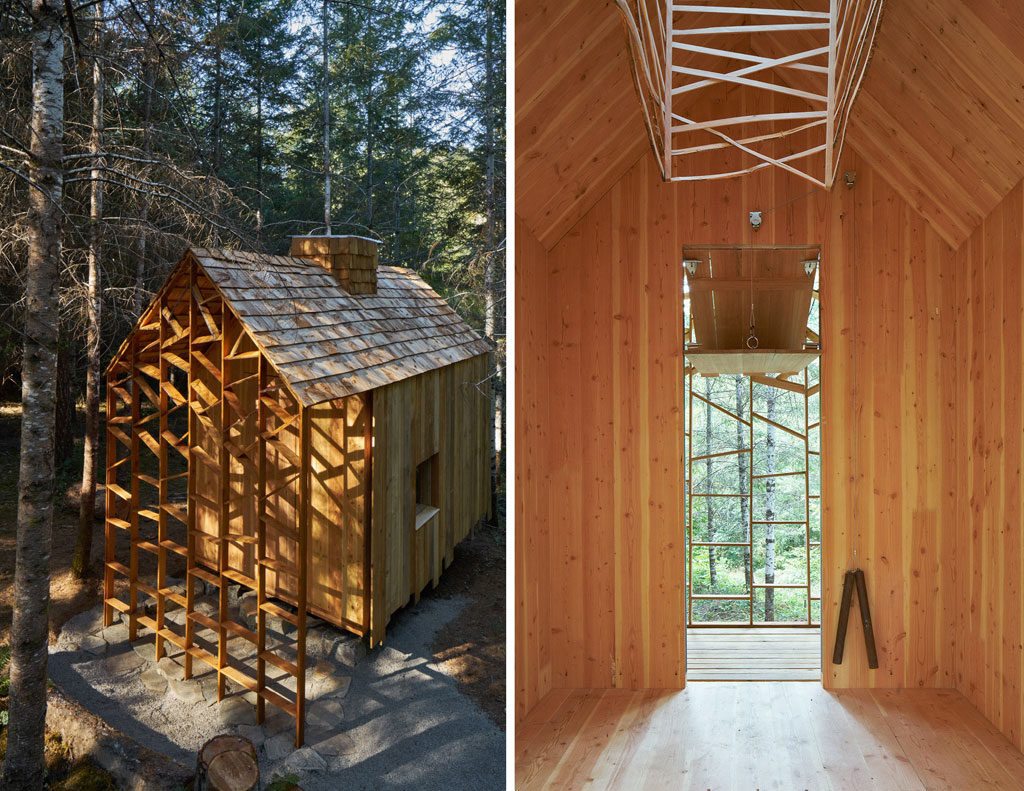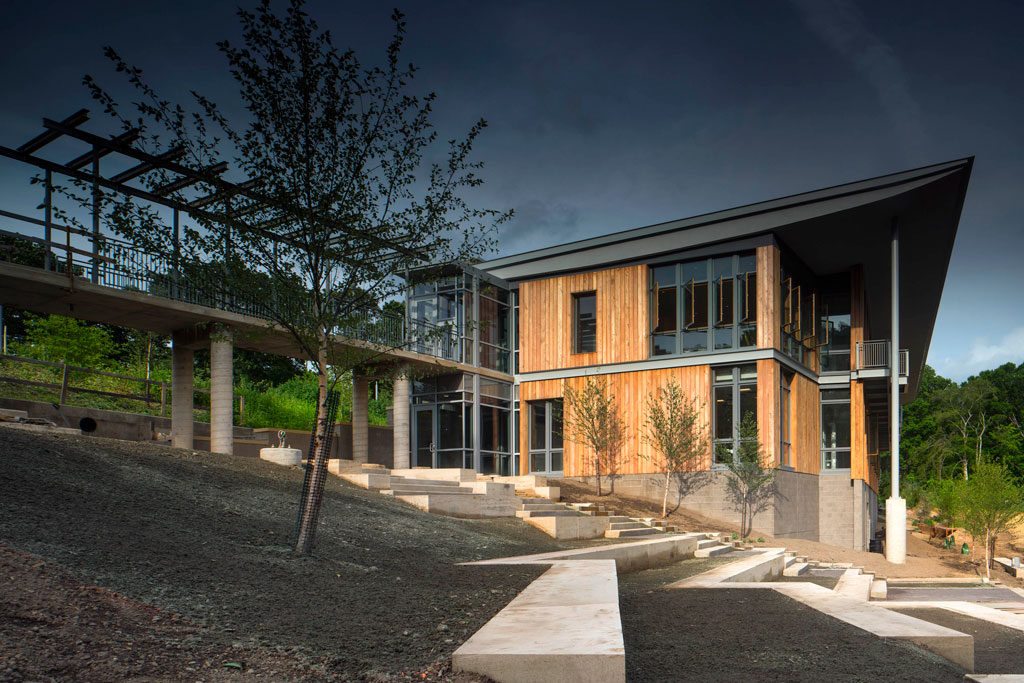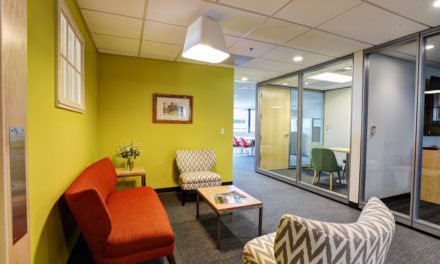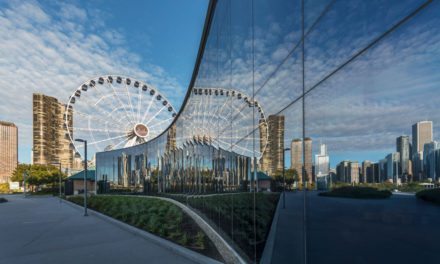Celebrating excellence in non-residential and multi-family wood design
Wood Products Council announced February 13, 2017 the winners of its 2017 Wood Design Awards, which celebrate excellence in wood building design across the U.S. Chosen by an independent jury in nine national categories, the winning projects exemplify attributes of wood such as beauty, strength, versatility and sustainability.
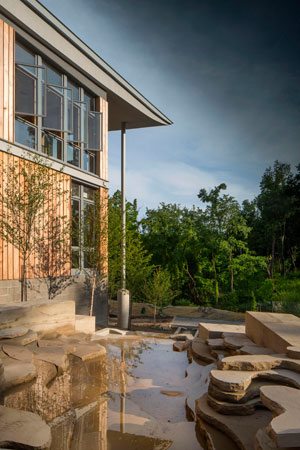
Project: Frick Environmental Center; Award Category: Regional Excellence; Pittsburgh, PA; Architect: Bohlin Cywinski Jackson; Structural Engineer: Barber & Hoffman, Inc.; Contractor: PJ Dick; and photos: Nic Lehoux Architectural Photography
“This year’s winning projects are interesting in part for what they say about the state of wood building design,” said WoodWorks Executive Director, Jennifer Cover. “The design community is clearly embracing innovative new materials, systems and techniques, contributing to a modern wood aesthetic that’s still linked to traditional wood construction and beauty. The concept of what a wood building can or should be is expanding, and that’s exciting. It’s an honor for us to share these projects with a wider audience.”
National award categories include:
- Wood School Design
- Multi-Family Wood Design
- Commercial Wood Design – Multi-Story
- Commercial Wood Design – Low-Rise
- Institutional Wood Design
- Wood in Government Buildings
- Beauty of Wood
- Green Building with Wood
- Special Achievement
Seven Regional Excellence Awards will be presented at regional Wood Solutions Fairs beginning with the Texas Wood Solutions Fair in Dallas on March 22.
National Winners
PROJECT: Common Ground High School
AWARD CATEGORY: Wood School Design
LOCATION: New Haven, CT
ARCHITECT: Gray Organschi Architecture
TIMBER ENGINEER: Bensonwood
ENVIRONMENTAL ENGINEER: Atelier Ten
PHOTOS: David Sundberg and Gray Organschi Architecture
For this Type VB, 15,000-square-foot addition to Common Ground High School, the project team chose a combination of CLT and glulam. CLT panels provide the tension surface (and final ceiling finish) in a revolutionary system of prefabricated stressed skin assemblies that span the upper classrooms and circulation spaces. Vertical CLT panels form bearing and shear walls throughout the building while glulam rafters and heavy timber trusses span a large ground floor multi-purpose space. A treated glulam bridge deck on laminated timber piers provides access from the upper campus. Assisted only by a mobile crane, a five-person assembly crew installed the entire primary structure and enclosure in just four weeks. A primary objective for this project was that the building itself would be an environmental exemplar that integrated new ecological concepts and building technologies in a clearly legible and potentially instructive way. The team chose mass timber for its many benefits, including renewability, sustainability, and carbon sequestration.
PROJECT: MOTO
AWARD CATEGORY: Multi-Family Wood Design
LOCATION: Denver, CO
ARCHITECT: Gensler
STRUCTURAL ENGINEER: Monroe & Newell Engineers, Inc.
CONTRACTOR: PCL Construction
PHOTOS: Gensler, Michelle Meunier, Ryan Gobuty. Photo credit below: Michelle Meuneir.
For this 82,000-sf, Type VA mixed-use project, wood was used both as the structural material and a design element that sets the building apart from its contemporaries. MOTO includes four stories of wood-frame apartments over a two-level concrete podium with above-grade parking. The massing of the 64-unit residential portion is what makes it distinctive; each level slides 2 ft away from the level below, revealing a cedar soffit on the exterior. The bathrooms and corridors are stacked, but the remainder of the apartments move with the 2-ft shift. Wood was chosen for its value and speed of construction. A panelized wall system allowed each level to be framed in about a week and the entire project in less than a month. Structural materials include a combination of dimension lumber, I-joists and LVL, while wood finishes include cedar tongue and groove soffits, trellis and pool deck railings, pine slab doors made from trees killed by the Mountain Pine Beetle, and reclaimed veneer pine. Estimated construction cost: $125/sf.
PROJECT: Albina Yard
AWARD CATEGORY: Commercial Wood Design – Multi-Story
LOCATION: Portland, OR
ARCHITECT: LEVER Architecture
ENGINEER: KPFF Consulting Engineers
CONTRACTOR: REWORKS
PHOTOS: Construction images – Courtesy of LEVER Architecture/Completed building – Jeremy Bittermann
Albina Yard is a four-story, Type VB office building with ground floor retail in North Portland. The client’s primary goal was to utilize domestic CLT in a market-rate office building that would pave the way for broader market adoption of renewable mass timber construction technologies. The architecture is focused on economy and simplicity, raw material expression, and the careful resolution and integration of building systems to foreground the beauty of the exposed Douglas fir structural frame. The 16,000-sf building is structured with a glulam timber frame and CLT panels—all locally manufactured. It was the first building the U.S. to use CLT panels as the structural diaphragm. Experientially, the dynamic form of the primary street façade is a direct expression of the 4-ft cantilevering capability of a 3-ply CLT panel. These cantilevers frame four levels of a structural Douglas fir glulam wood window wall system. Working collaboratively, the team optimized costs by simplifying details and leveraging CLT’s two-way spanning capacity to utilize fewer glulam beams. Columns and beams were prefabricated offsite to 1/8-in. tolerances, allowing components to be quickly assembled on site with custom designed connections.
PROJECT: The Barn
AWARD CATEGORY: Commercial Wood Design – Low-Rise
LOCATION: West Sacramento, CA
ARCHITECT: !melk
STRUCTURAL ENGINEER: Magnusson Klemencic Associates
CONTRACTOR: Brown Construction Incorporated
PHOTOS: !melk
Situated in the Northern California agricultural zone, the sculptural form of The Barn is inspired by a sprouting vegetable seed. The concept is facilitated by a contemporary interpretation of traditional barn building components with the aid of parametric design. Part of a new, 178-acre neighborhood called The Bridge District, The Barn is a 9,100-sf, Type IV multi-use structure designed to house a restaurant and other commercial tenant. Structurally, the building appears to defy gravity. Programmatically, the project is comprised of a superstructure connected to the ground by two enclosed pods, an open air canopy, and a larger landscape that connects to a river walk and new development. As a double cantilever, the superstructure springs upward from the pods, meeting at a dramatic apex that forms the canopy. The beams and trusses are made from glulam while intermittent steel reinforcements join the trusses into beautifully expressed trestles. The shell of the structure is achieved with dimension lumber, laid side-by-side in a singular direction to create straight line-generated curves on which the roof shingles were applied. Estimated construction cost: $210/sf.
PROJECT: Writers Theatre
AWARD CATEGORY: Institutional Wood Design
LOCATION: Glencoe, IL
ARCHITECT: Studio Gang Architects
STRUCTURAL ENGINEER: Halvorson and Partners
CONTRACTOR: W.E. O’Neil
PHOTOS: Steve Hall ©Hedrich Blessing
The architectural identity of this three-story, Type VA Writers Theatre is strongly connected to the form and function of its public lobby, which is wrapped by a wooden Canopy Walk. The Canopy Walk is hung from primary glulam roof beams with 2”x3” wood tension battens. The battens are made from sustainable Port Orford cedar, which has exceptionally straight grain and is naturally rot resistant. The screen pattern follows the load path of the structure. The battens are bundled at beams to minimize the load at mid-span and offset to distribute the load evenly. Made locally with traditional woodworking tools, the battens were steamed before the wedges were inserted. A flared detail at the lower cord connects the battens and glulam beams without mechanical fasteners. The flared connection is designed to slide up into a matching groove in the glulam, and an undercut prevents it from slipping forward once locked into place. In addition to adding drama to the space, the use of repetitive wood members as both structure and shading improves the building’s environmental embodied and operating energy performance, contributing to the targeted LEED Gold certification. Estimated construction cost: $722/sf.
PROJECT: ROSEWOOD BEACH
AWARD CATEGORY: Wood in Government Buildings
LOCATION: Highland Park, IL
ARCHITECT: Woodhouse Tinucci Architects
STRUCTURAL ENGINEER: Enspect Engineering Consultants
CONTRACTOR: WB Olson, Inc.
PHOTOS: Bill Timmerman
Built along the shore of Lake Michigan, the facilities in Rosewood Park are designed both to reflect the elemental experience of a leisurely stroll along the lake, and to survive a 100-year storm that would remove much of the sand from the beach. A hybrid system of light wood-frame and steel construction was utilized to create an extra thin profile for roof and wall assemblies, while 248 driven timber piles provide structure for the boardwalk. To minimize bulk, only functions needing privacy or separation are enclosed. Everything else, including circulation, is outdoors. Pavilions are long, low, thin, and topped with boardwalk planking to protect views from down the beach and the park above. At the north end, a wood-clad environmental education pavilion includes a 1000-sf glazed porch backed by a narrow bar containing services. To the south, the wood surface of the boardwalk morphs into benches along the parking area and bridges across a stream to reach the welcome pavilion and office. Beyond, the boardwalk folds up to form the snack bar and restroom pavilions, mirrored to create an exterior dining space beneath pergolas. Farther south, it leads through a sandy picnic area and up the beach stair to the park above. Type VA / 2,800 sf. Estimated construction cost: $178/sf.
PROJECT: University of Minnesota Landscape Arboretum Tashjian Bee and Pollinator Discovery Center
AWARD CATEGORY: Beauty of Wood
LOCATION: Chanhassen, MN
ARCHITECT: MSR Design
STRUCTURAL ENGINEER: Meyer Borgman Johnson
CONTRACTOR: Loeffler Construction & Consulting
PHOTOS: Richard Brine
A mix of dimension lumber, glulam, LVL and structural insulated panels, this 7,860-sf, Type VB project includes exhibit space, a learning lab, and demonstration workspace for honey extraction. As the honeybee structures its comb in the inherently economical, close-packed form of the hexagon, a single-point perspective view of the repeating wood-frame structure is transformed into a warm wood hexagon in the reflection of sunlight on the floor. Among the project highlights, integration of modern technology with passive design strategies has resulted in a high-performance structure that requires 70% less operational energy than typical comparable buildings and meets aggressive targets of the Architecture 2030 Challenge. The use of wood was critical to realizing the project’s design and performance goals. In the project’s cold climate, a robust and well-insulated envelope is paramount. The team chose panels that combine wood studs and polyurethane insulation. Thermal bridging and air infiltration were minimized by the inherent thermal resistance of wood, by providing continuous insulation, and through the use of exterior plywood sheathing to create an air barrier. Estimated construction cost: $423/sf.
PROJECT: DIXON WATER FOUNDATION JOSEY PAVILION
AWARD CATEGORY: Green Building with Wood
LOCATION: Decatur, TX
ARCHITECT: Lake|Flato Architects
STRUCTURAL ENGINEER: Lake|Flato Architects
PHOTOS: Casey Dunn, Dror Baldinger, AIA
Tasked with designing an open-air pavilion for the Dixon Water Foundation, Lake|Flato Architects used wood to create a structure that reflects both the natural prairie surroundings and the client’s resource conservation ideals. Chosen for its simplicity, beauty and sustainability, exposed timber framing helped the Type IV, 5,400-sf education and meeting facility achieve Living Building Certification, widely regarded as one of the highest hallmarks of sustainability. The design employed a simple material palette focused on products that were minimally processed and naturally durable. The wood sidings are made entirely from sinker pine. These are logs that were harvested in the Southeastern U.S. in the late 19th century, but had sunk to the bottom of a river during transit. Today, having been naturally preserved, these logs are salvaged from river bottoms and prized for their durability. The low, unfinished concrete perimeter walls were designed for sitting but also act as a durability element by raising the base of the wood columns and walls and reducing their exposure to rain and sun. The beauty of Josey Pavilion lies in the building’s simple form that sits lightly on the land, exposing the beauty of its wood structure.
PROJECT: T3
AWARD CATEGORY: Special Achievement
LOCATION: Minneapolis, MN
ARCHITECT: MGA | Michael Green Architecture, DLR Group
STRUCTURAL ENGINEER: Magnusson Klemencic Associates
DESIGN ASSIST + BUILD: StructureCraft
CONTRACTOR: Kraus-Anderson Construction Company
PHOTOS: Ema Peter; MGA (drawings)
At seven stories and 220,000 sf, T3 is a game changer for the commercial building industry, demonstrating the feasibility of exceptionally large timber projects as a means to reduce the carbon footprint of the built environment while creating warm, appealing spaces. Inside the building, exposed glulam columns and beams, and nail-laminated timber (NLT) floors, offer a modern interpretation of historic wood buildings found in many U.S. cities. From a cost and construction standpoint, a great deal of effort went into developing efficient systems to reduce schedule. The timber erection was completed in just 2.5 months at an average of nine days per 30,000-sf floor. More than 100 truckloads of glulam and NLT panels arrived as they were needed at the site, allowing the structural components to be assembled quickly. The project team estimates that T3 is 30% lighter than a comparable steel design and 60% lighter than post-tensioned concrete, which allowed them to reduce the depth of the foundation. Developer Hines plans to leverage the design for a suite of similar wood office buildings.
Regional Excellence Winners
PROJECT: Duke Faculty Club
AWARD CATEGORY: Regional Excellence
LOCATION: Durham, NC
ARCHITECT: Duda|Paine Architects
STRUCTURAL ENGINEER: Gardner & McDaniel, PA
CONTRACTOR: Romeo Guest Construction
PHOTOS: Robert Benson Photography
PROJECT: One North – Karuna East and West Buildings
AWARD CATEGORY: Regional Excellence
LOCATION: Portland, OR
ARCHITECT: Holst Architecture
STRUCTURAL ENGINEER: Froelich Engineers
CONTRACTOR: R&H Construction Co.
PHOTOS: Andrew Pogue
PROJECT: Cowell Ranch Hay Barn
AWARD CATEGORY: Regional Excellence
LOCATION: Santa Cruz, CA
ARCHITECT: Fernau & Hartman Architects
STRUCTURAL ENGINEER: Tuan and Robinson Structural Engineers
CONTRACTOR: Cen Con
PHOTOS: Cesar Rubio Photography
PROJECT: The Littleton Trials
AWARD CATEGORY: Regional Excellence
LOCATION: Littleton, MA
ARCHITECT: Decentralized Design Lab
STRUCTURAL ENGINEER: Simpson Gumpertz & Heger
CONTRACTOR: Decentralized Design Lab
PHOTOS: Decentralized Design Lab
PROJECT: Firehouse 12
AWARD CATEGORY: Regional Excellence
LOCATION: New Haven, CT
ARCHITECT: Gray Organschi Architecture
STRUCTURAL ENGINEER: Jacobson Structures
CONTRACTOR: JIG Design Build
PHOTOS: David Sundberg, ESTO
PROJECT: Emerge
AWARD CATEGORY: Regional Excellence
LOCATION: Eugene, OR
ARCHITECT: University of Nebraska-Lincoln, College of Architecture Student Team 2016
STRUCTURAL ENGINEER: PCS Structural
CONTRACTOR: Justin Austen Design
PHOTOS: Mike Lundgren
PROJECT: Frick Environmental Center
AWARD CATEGORY: Regional Excellence
LOCATION: Pittsburgh, PA
ARCHITECT: Bohlin Cywinski Jackson
STRUCTURAL ENGINEER: Barber & Hoffman, Inc.
CONTRACTOR: PJ Dick
PHOTOS: Nic Lehoux Architectural Photography
Photos of the winning projects are available on the WoodWorks website, http://www.woodworks.org/project-gallery/, along with a wide range of technical and educational resources for design and building professionals.
About WoodWorks
WoodWorks – Wood Products Council (www.woodworks.org) provides free one-on-one project assistance as well as education and resources related to the code-compliant design of non-residential and multi-family wood buildings. WoodWorks technical experts offer support from design through construction on a wide range of building types, including mid-rise/multi-residential, educational, commercial, corporate, institutional and public.

